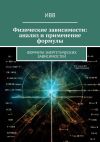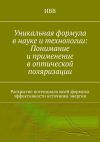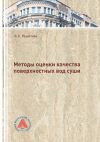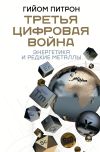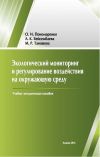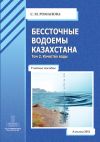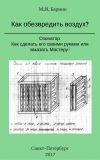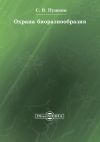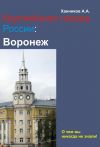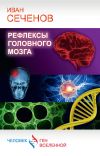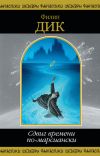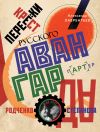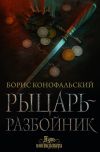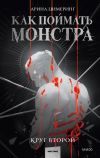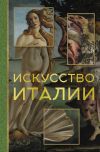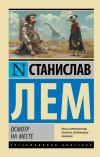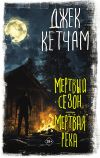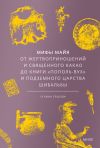Текст книги "Все науки. №6, 2022. Международный научный журнал"

Автор книги: Анора Юсупова
Жанр: Физика, Наука и Образование
Возрастные ограничения: +12
сообщить о неприемлемом содержимом
Текущая страница: 4 (всего у книги 6 страниц)
Важность исследований резонансных ядерных реакций была не раз констатирована в ряде научных статей и проводимых исследованиях, а также для этого была посвящена специальная монография «Использование ускорителей и явлений столкновения элементарных частиц с энергией высокого порядка для генерации электрической энергии. Проект „Электрон“», в которой подробно описывались 6 ядерных реакций, в 4 из которых происходил процесс бомбардировки мишени из бериллия, бора, алюминия и лития протонами, а в 2 из них, происходила бомбардировка мишени из лития-6 и лития-7 дейтронами, за счёт чего выделались на ряду с основным продуктом реакции – альфа-частицами, ещё и целый комплекс иных частиц, которые после отклонений в МГД-генераторе представлялись как электрический ток.
Говоря об описанном научном труде, важно отметить, что это была в первую очередь теоретическая работа, в которой имели места расчёты крайне высоких значений в связи с током, когда заряды пучков крайне большие, как и токи, доходя до нескольких кА. И лишь в завершении учитывались более приближённые данные. В данном же случае ведётся расчёт также и в моменте, когда токи малы и более приближены к реальным. Для сравнения, токи в недавно созданном циклотроне ДЦ-280 не доходили до значения в 1 А, а измерялись лишь в мА.
Такие же параметры можно привести и для электростатического ускорителя «ЭГ-2 СОКОЛ», ныне принадлежащий Научно-исследовательскому Институту полупроводников и микроэлектроники при Национальном Университете Республики Узбекистан.
Следовательно, для осуществления подобного рода ядерных реакций, когда необходимые особые условия, их необходимо в очередной раз указать и уточнить, максимально приблизив к реальным значениям. Кроме того, если подробно остановится на механизме реакций, получается картина с того, что как указывалось, важно наличие специального устройства – ускорителя заряженных частиц, который мог бы придавать большую энергию в размере нескольких МэВ, для заряженной частицы. После чего данная частица наталкивалась бы на мишень определённого вещества, благодаря чему и проходила определённая ядерная реакция. При этом происходит целый ряд процессов, одним из которых является преодоление кулоновского барьера, то есть даже если ядерная реакция происходит с выходом энергии, частица для осуществления этого действия всё равно должна затратить некоторую энергию, но если подобрать общую комбинацию следующим образом, чтобы затрачивалось такое количество энергии, благодаря чему в конечном итоге оставалось малое количество энергии, превращая налетающую частицу в медленную, то вероятность прохода этой реакции резко увеличивается до не малых значений, уже после кулоновского барьера, когда кулоновские силы уже не учитываются и процесс проходит на ядерном радиусе, как и было указано.
Таким образом актуально создание ЛЦУ, который придавал бы энергии заряженным частицам с 9—10 порядком, что значительно увеличивает эффективность всей исследуемой системы и приводит к более точному определению кулоновского и иных барьеров любой реакции. При этом данный ЛЦУ, имеет целый ряд преимуществ наряду со всеми имеющимися ускорителями, поскольку для начала, является комбинацией двух классов ускорителей: циклических и линейных.
Говоря же об ускорителях, важно отметить, что ускорители сами по себе просты, в них частицы ускоряются под действием электрического поля, на этом основан весь принцип. Также нельзя и усомниться в том, что наконец пришло время для реакции первых резонансных ядерных реакций на первом ЛЦУ. Ведь если прибегать к истории, то, к примеру, самый первый ускоритель был построен в 1930 году Лоуренсом Беркли. Первыми ускорителями считаются ускорители 1931 годов, когда был создан 23 см кольцевой циклотрон в Калифорнийском университете на ускорение водородных ионов с энергией в 1 МэВ. Также был разработан в 1932 году 28 см кольцевой протонный циклотрон на энергию в 1,2 МэВ в Беркли. Там же в Калифорнийском университете, Беркли разработаны действующий с 1932 по 1936 гг. 68 см кольцевой дейтериевый циклотрон на энергию 4,8 МэВ; действующий с 1937 по 1938 гг. 94 см кольцевой дейтериевый циклотрон на 8 МэВ; с 1939 г. по нынешнее время действующий 152 см кольцевой тритиевый циклотрон на 16 МэВ; с 1942 г. по нынешнее время действующий 467 см кольцевой циклотрон для различных заряженных частиц на энергию более 100 МэВ. Вместе с этим в 1932 году в Кавендишской лаборатории был сконструирован протонный электростатический протонный ускоритель на энергию 0,7 МэВ Кокрофта-Уолтона, действующий благодаря умножителю напряжения Эрнеста Томаса Синтона Уолтона и сэра Джона Дугласа Кокрофта (лауреатов 1951 г.), уже более известный также как умножитель напряжения Кокрофта-Уолтона.
Также известны ускорители Гарварда (1949—2002), Национальной лаборатории Оук-Ридж (1943-н.в.) для протонов и ядер урана с энергиями от 160 МэВ. Также создавались синхротроны известные как космотрон в Брукхейвенской национальной лаборатории, 1953—1968 гг. 72 метра для протонов в 3,3 ГэВ, также Бирменгемский сихротрон, беватро, ускоритель «Сатурн», Российский синхрофазотрон в Дубне, Протонный циклотрон в ЦЕРН. Перечисление ускорителей может быть довольно долгим процессом, не говоря уже об описании каждого, благодаря разности их видов, характеристик и физики. Поэтому нет места для сомнений в прохождении достаточно пути в данной сфере со стороны мировой науки, чтобы начались исследования и работы в конструировании новейшего циклотрона резонансного типа.
Целью данной научно-исследовательской работы является полная разработка ускорителя заряженный частиц «ЛЦУ-ЭПД-20» (линейно-циклотронный ускоритель протон-дейтериевого циклотрона для проекта «Электрон» с энергией до 20 МэВ, с высоким порядком), для подробного исследования резонансных ядерных реакций.
Задачами данного исследования являются:
· Изучение общей системы работы, физики и истории ускорителей;
· Разработка электрической системы ускорения (ВЧ-система);
· Вычисление параметров и алгоритма создания магнитной системы;
· Изучение вакуумной системы и разработка метода достижения необходимого уровня вакуума;
· Разработка системы контроля действия ускорителя и придачи необходимого уровня энергии;
· Разработка механизма и физики детектирования получаемых результатов;
· Создание технологии математического моделирования системы ускорителя заряженных частиц;
· Описание вариаций работы на ускорителе на примерах резонансных ядерных реакций.
Объектом данного исследования является ускоритель заряженных частиц ЛЦУ-ЭПД-20 резонансного типа.
Предметом исследования является изучение процесса создания ускорителя заряженных частиц резонансного типа, и технология проведения на данном ускорителе экспериментов.
Для данного исследования были применён инструментальный, эмпирический и теоретический метод исследования (с некоторыми оговорками), что выдало необходимые важные результаты.
Научная новизна данной исследовательской работы заключается в следующем:
· Первое слияние двух классов ускорителей: циклотронного и линейного, в итоге чего образуется система ЛЦУ;
· Впервые разрабатывается система, действующая в масштабе 9—10 порядков;
· Открыта возможность к проведению экспериментов с значениями энергий в 3 единиц 11—12 порядок, благодаря варьированию значения до 20 МэВ;
· Первое применение возможности проведения ядерных реакций на протонах и дейтронах с оперированием кулоновскими барьерами на любых ядрах;
· Единственное устройство на планете за всю историю человечество с такой критической точностью эксперимента;
· Указание в качестве первого исследования в области физики резонансных ядерных реакций;
· Первое представление ускорителя заряженных частиц в качестве источника электрической энергии;
· Единственные исследования в качестве ускорителя без перехода к методу генерации электрической энергии с переходом в котлованный механизм;
· Огромный объём генерируемой электрической энергии;
· Возможность перехода на высшие ядра (с 119 ядра).
Говоря о новизне данного исследования, наряду с множеством пунктом, которые в данном случае приводятся лишь частично, важно уточнить тот факт, что особенностью ускорителя, создаваемого для научно-исследовательской лаборатории при проекте «Электрон» ЛЦУ-ЭПД-20 является точность. Именно возможность придавать дуантам определённое напряжение, что при проходе через щели электрического поля, где и осуществляется ускорение пучка, ускоряется только на некоторое число, которая является лишь частью конечной энергии.
Как можно указать в самом названии реакции, необходимо вызвать резонанс, но не из-за частного «совпадения», а именно из-за энергетического подхода, как это описывалось ранее, но будет ещё более подробно описываться в последующих главах, где изначально приводится история ускорительной техники, затем разрабатывается основной физический и математический аппарат, позволяющий уже оперировать с образующимися системами ускорения пучка.
Практические результаты заключатся в следующем:
· Разработана целая программа по реализации ЛЦУ-ЭПД-20;
· Вычислены все необходимые данные ЛЦУ-ЭПД-20;
· Получена вся физика и методы работы для нового ЛЦУ-ЭПД-20;
· Разработана технология создания ускорителя ЛЦУ-ЭПД-20;
· Выражены отличительные черты резонансных ускорителей;
· Разработан проект научно-исследовательской лаборатории при новом проекте «Электрон» с использованием ЛЦУ-ЭПД-20;
· Разработана концепция научно-исследовательской лаборатории при проекте «Электрон» с использованием ЛЦУ-ЭПД-20;
· Опубликована монография «Использование ускорителей и явлений столкновения элементарных частиц с энергией высокого порядка для генерации электрической энергии. Проект „Электрон“» с описанием 1 этапа исследования проекта «Электрон»;
· Планируется публикация целого списка монографий для подробного описания проекта ускорителя ЛЦУ-ЭПД-20;
· Разработана «Дорожная карта» проекта «Электрон».
Достоверность результатов основана на том, что будут использованы общепринятые математические, физические и иные операции. А также будут использованы экспериментальные данные, полученные в различных лабораториях и научно-исследовательских центрах, а также из практики учёных, по созданию такого рода ускорителей.
Данное исследование было не раз обсуждено на собрании докторов и кандидатов физико-математических наук Ферганского Государственного Университета, рецензентов монографии по 1 этапу проекта «Электрон», учёных Ферганского Политехнического Института, а также при контакте-обсуждении с доктором технических наук, доцентом научно-исследовательского института физики полупроводников и микроэлектроники Национального Университета Узбекистана.
Результаты проводимого исследования опубликованы в научных статьях в международных журналах «Точная Наука», «Молодой учёный» и некоторых других, в данной монографии и в монографии Алиева И. Х. и Шарофутдинова Ф. М. «Использование ускорителей и явлений столкновения элементарных частиц с энергией высокого порядка для генерации электрической энергии. Проект «Электрон»», опубликованная ещё в 2021 году, рецензентами для которой стали доктор физико-математических наук, профессор физико-технического факультета Ферганского Государственного Университета Отажонов Салим Мадрахимович, доктор технических наук, доцент научно-исследовательского института физики полупроводников и микроэлектроники Национального Университета Узбекистана Кулдашев Оббос Хакимович, кандидат физико-математических наук, доцент физико-технического факультета Ферганского Государственного Университета Каримов Боходир Хошимович, кандидат физико-математических наук, доцент физико-математического факультета Ферганского Политехнического Института Абдурахмонов Султонали Мадрахимович, доктор философии по физико-математическим наукам, старший преподаватель физико-технического факультета Ферганского Государственного Университета Зайнолобидинова Сапура Маликовна, старший преподаватель физико-технического факультета Ферганского Государственного Университета Юлдошалиев Дилшод Кулдошалиевич».
Именно так на данный момент выглядит проект первого в мире ускорителя резонансного типа ЛЦУ-ЭПД-20. А после проведения всего проекта «Электрон» можно достичь осуществления грандиозной работы, которая открывает новые возможности, делает целое государство полностью энергетически независимым, потому что этих 17,56 ГВт*ч электрической энергии более чем достаточно для обеспечения всей Республики Узбекистан на 174,4%, благодаря чему может появиться новая отрасль инфраструктуры являющаяся направлением энергетического экспорта со стороны государства, что также приведёт к улучшению и развитию государственной экономики и не только в промышленном смысле, но также и в самом настоящем научном!
В. English version1. General concepts of nuclear reactions
By itself, a nuclear reaction is the process of interaction of an atomic nucleus with another nucleus or elementary particle, which may be accompanied by a change in the structure, structure, composition of the nucleus, the formation of new nuclei or elementary particles and the introduction of further changes. Also, the consequence of a nuclear reaction can be its fission, the descent of both elementary particles and massless protons. At the same time, due to the action of several other laws, under which mass can actively be converted into energy and vice versa, the kinetic energy of the resulting particles may well not be equal to the sum of the original ones.
Such nuclear reactions are exo-energetic or energy-releasing. The first nuclear reaction was carried out by Ernest Rutherford in 1917, when alpha particles bombarded the nuclei of nitrogen atoms. It was completely fixed due to the appearance of secondary ionizing particles, whose mileage in the gas was greater than the mileage of alpha particles, after which they were identified as protons. The process was later photographed.
By the way, about this, it is important to say that a Wilson camera is used to photograph nuclear reactions. Speaking about the mechanisms of interaction, we can distinguish two types of such interaction, namely:
1. Reaction with the formation of a composite nucleus, this process consists of two stages, while the incoming particle combines with the bombarded nucleus itself, forming a common core, which later decays. Such a nuclear reaction proceeds at low energies, up to 10 MeV;
2. Direct nuclear reactions that take place immediately, in nuclear time, which is the smallest fractions of a second and are calculated based on other factors, one of which is the time of crossing the nucleus by a particle. Basically, this type of reaction is expressed only at very high energies of the bombarding particles.
If the original nuclei are preserved after the nuclear reaction itself, no new particles are also born, then the reaction is considered elastic scattering in the field of nuclear forces, without any internal interaction. Such a reaction is accompanied only by the transfer of kinetic energy and momentum of one incoming particle to the target nucleus, being called potential scattering and fully obeying the laws of conservation of momentum in this case.
The reaction mechanisms were mentioned earlier, but it is worth dwelling on them in more detail. The first reaction, namely the mechanism of the composite nucleus, was first developed and proposed by Niels Bohr in 1936 together with the famous theory of the droplet model. This theory even today underlies the great ideas about all nuclear reactions.
If we follow this theory, then, as described, the nuclear reaction follows in two stages, while the entire process from collision, formation of a composite nucleus and its decay takes within 10-23-10-21 seconds. And it is important to note that whatever the composite nucleus is, it is always excited due to the excess energy that is introduced by the particle in the face of the binding energy of nucleons in the composite nucleus and part of the kinetic energy of the composite nucleus, which is equal to the sum of the kinetic energy of the target nucleus with a certain large mass number and the incident particle in the system of the so-called the center of inertia.
Here it is important to define such a concept as the excitation energy of a composite nucleus, which was formed during the absorption of a free nucleon. It is the sum of the binding energy of the nucleons of the target nucleus and part of its kinetic energy (1).

Part of the kinetic energy due to the large difference in the masses of the nucleus and the nucleon in such cases becomes equal to the kinetic energy of the bombarding nucleon. On average, the binding energy is equal to 8 MeV and can change only with the distinctive features of the composite nucleus formed in this process, but for the precisely specified target nucleus and nucleon, this value is a constant. The kinetic energy of a particle can be anything, for example, in nuclear reactions where a neutron strikes, due to the fact that there is no repulsive force of the nucleus – the Coulomb barrier, their energy can be extremely close to zero.
Thus, the kinetic energy is the minimum excitation energy of the composite nucleus.
And it is from the statement of the presence of a composite nucleus and the existence of nuclear decay channels that we can conclude about the existence of reaction channels. The reaction channels themselves are the ways of transition from an excited to an unexcited state. The type and quantum state of the incoming particles and nuclei before the start of the reaction determine the input channel of the nuclear reaction, after the completion of the reaction, the totality of the formed particles, that is, the reaction products and their quantum state is determined by the resulting output channel of the reaction. The complete characterization of the nuclear reaction is carried out by input and output channels.
The composite nucleus itself lives for quite a long time, due to which the choice of the reaction channel itself does not depend at all on the method of formation of the composite nucleus, due to which it «forgets» how it was formed. This becomes the reason for the assertion of the independence of the processes of the organization of the composite core and its disintegration. A striking example can be the situation of the formation of an excited aluminum-27 nucleus in the following ways (2).

But it decays violently in the same way in all cases, provided that the excitation energy is the same. But at the same time, there is also a possibility of reverse decay of any of these reactions, with a certain probability that does not depend on the history of the origin of the excited nucleus itself. If we talk about the probability of such events, then the dependence becomes between the grade of the target nucleus and the energies.
As previously indicated, nuclear reactions can also proceed through a direct channel of interaction at high energies, since the nucleons of the nucleus can be considered as free. The difference from the previous composite core model from the direct reaction model initially consists in the distribution of the momentum vectors of the particles-products of the nuclear reaction, relative to the momentum of the bombarding particles. If spherical symmetry operates in the composite model, then in this case the geometry is simpler and the advantage in choosing the directions of the resulting particles is in the direction of the incoming particles.
Earlier, the concept of the probability of a nuclear reaction was mentioned, which is represented by a quantity called the effective cross section of a nuclear reaction. In the laboratory system of the report, the resting situation of the target nucleus is taken, the probability of interaction is determined by the product of the cross section by the flow of incident particles, while the cross section is expressed in units of area, and the flow in the number of particles crossing the unit area per unit time. The cross section of the nuclear reaction itself is calculated in extremely small units of area – barns equal to 10—24 cm2.
The ratio of reaction cases attributed to the number of particles bombarding the target is called the yield of a nuclear reaction. This value is determined experimentally by quantitative measurements, which is associated with the cross—section of reactions, and the measurement of this output is in essence the measurement of the reaction cross-section.
The laws of physics, including conservation laws, of course also apply in nuclear reactions. These laws impose certain restrictions on the possibility of carrying out a nuclear reaction itself. There are also some more specific conservation laws peculiar to the microcosm, an example of such can be the law of conservation of the baryon or lepton number. They are performed on all known reactions, but some other laws of parity conservation, isospin, strangeness, only act in fundamental interactions. The consequence of them is the selection rules that determine the real and impossible nuclear reactions that can be carried out.
The law of conservation of energy in nuclear reactions acts predictably, but very specifically for representatives of the macrocosm. In this case, the equality of the sums of the total energies (3) is fulfilled.

If we paint (3), then we can get (4), from which follows the reaction energy (5), which satisfies (6).



Thus (5) can also be rewritten as (7).

If the reaction yield is greater than zero, then this reaction is exo-energetic and is accompanied by the release of energy into the kinetic energy of the reaction products, in the opposite case – absorption and is called endo-energetic. The adjustment of such a process becomes clear both by the mass difference before and after the reaction, and with a positive difference, we can say that it turns into kinetic energy and the reaction generates energy, in the opposite case, that is, with a negative difference, the process absorbs it.
The law of conservation of momentum also applies, which is very noticeable in direct reactions (8).

At the same time, there is a law of conservation of momentum and a number of other laws, but the most basic ones acting in the reaction are these two conservation laws.
But now it is important to focus on the types of nuclear reactions, and there are several of them: nuclear fission reaction, fusion, thermonuclear reaction and photonuclear reaction. The first type is a nuclear fission reaction, this is the process of splitting an atomic nucleus into two, and less often into three nuclei with close nuclear masses, which are called fission fragments. Other reaction products may also occur, including light nuclei – alpha particles, deuterons, as well as neutrons and gamma quanta. Fission itself is spontaneous and spontaneous, or forced, due to interaction with other particles, for example neutrons. The fission of heavy nuclei is in most cases an exo—energetic process, which makes it possible to obtain energy from radiation and kinetic energy of products from this process.
The nuclear fusion reaction is the second nuclear process, which consists in the fusion of two nuclei to form a new, heavier nucleus. This process is often accompanied by the emission of gamma rays or other elementary particles. Fusion of nuclei is most often an endo-energetic process, which most often requires the introduction of energy through the kinetic energies of particles in order to overcome the Coulomb barrier – the electrostatic repulsion of nuclei. The fusion of two nuclei and giving them energy can be realized, as it is not difficult to guess in charged particle accelerators, or these particles originally possessed this energy, for example, cosmic radiation particles, but there is another way – it is heating matter to extremely high temperatures in a special thermonuclear reactor, where the kinetic energy of particles and temperatures are extremely huge.
In this way, it is possible to approach thermonuclear reactions. In such reactions, the fusion of light nuclei leads to the conversion of the excess mass of the original nuclei into energy, since the total mass of the merged nuclei is greater than the mass of the resulting nucleus-the reaction product.
From this it can be concluded that the nuclear fusion reaction of the initial nuclei must have a relatively large kinetic energy, because they experience a rather powerful electrostatic repulsion when passing from their side of the Coulomb barrier. According to the molecular kinetic theory, their kinetic energy can be represented as the temperature of the entire substance, therefore heating will lead to an increase in the kinetic energy of the composite particles and their fusion. This is how nucleon synthesis develops in the bowels of stars with the formation of new nuclei under enormous temperatures.
In particular, the fusion reaction of protons and helium nuclei occurs in large quantities, and as a side result, other isotopes of substances are formed, including deuterium and tritium, as isotopes of hydrogen. And finally, the last type of nuclear reaction is a photonuclear reaction, in which case a gamma quantum is absorbed with sufficient energy to excite the nucleon composition, that is, the nucleus, so that it becomes composite, that is, it can be considered as such, and also releases a different structure from itself, or decays.
This process is called a photonuclear reaction or a nuclear photoelectric effect. And in conclusion, it is worth noting that nuclear reactions can be written as in the form of an equation, as demonstrated earlier, or, for example, in (9), there is also a slightly different notation (10).


As a result, it can be concluded that it is very important for any researcher in contact with this field, including the physics of resonant nuclear reactions, to have knowledge about the nuclear reactions themselves.
And if you notice, then as it was noted, nuclear physics has been developing for a long time, not to mention the time that humanity has spent to study the structure of all matter and matter as a whole. But active research has led to the very recent discovery of a new direction in this field, namely, the physics of resonant nuclear reactions. For the first time such terminology was used and practically demonstrated in the monograph of 2021 by Aliyev I. H. and Sharofutdinova F. M. «The use of accelerators and the phenomena of collisions of elementary particles with high-order energy to generate electrical energy. The Electron Project», which later received its continuation.
Правообладателям!
Данное произведение размещено по согласованию с ООО "ЛитРес" (20% исходного текста). Если размещение книги нарушает чьи-либо права, то сообщите об этом.Читателям!
Оплатили, но не знаете что делать дальше?